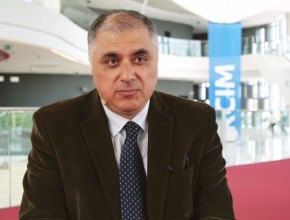Dr Matthew Sibbald is an associate professor in the Division of Cardiology at McMaster University and interventional cardiologist at Hamilton Health Sciences.
What should be the duration of dual antiplatelet therapy in patients after percutaneous coronary interventions (PCIs)?
Matthew Sibbald, MD, MHPE, PhD: This is an interesting area. Historically, we would give a year of dual antiplatelet therapy after putting in a stent and that was felt to reduce stent thrombosis in repeat myocardial infarction (MI) and goes back to trials that were done in the early 2000s, CREDO (Clopidogrel for the Reduction of Events During Observation) and CURE (Clopidogrel in Unstable Angina to Prevent Recurrent Events).
We have had a lot of new literature that has experimented with different lengths of dual antiplatelet therapy, with some prolonging antiplatelet therapy beyond 1 year. We have got 2 very large trials, the DAPT (Dual Antiplatelet Therapy) trial and the PEGASUS-TIMI 54 (Prevention of Cardiovascular Events in Patients with Prior Heart Attack Using Ticagrelor Compared to Placebo on a Background of Aspirin–Thrombolysis in Myocardial Infarction 54) trial, and then we have a series of smaller randomized trials that have tried to shorten the duration of antiplatelet therapy to 3 or 6 months, and even suggestions of trying to shorten it down to 1 month. I think it is a challenge for practitioners to figure out what patients benefit from what length of dual antiplatelet therapy.
Maybe I will share a little bit about the 2 large trials, because I think they help inform practice. The DAPT trial took 10,000 patients who had completed a year of dual antiplatelet therapy and if they had not had any bleeding or ischemic events, they randomized them to continue the dual antiplatelet therapy up to 30 months or stop it. They found benefits in continuing in reducing stent thrombosis in MI but at the cost of bleeding. It was about a 1% increase rate of bleeding.
The other large trial, PEGASUS, compared patients who had prior MI and 1 other risk factor that would increase their chance of MI: a second MI, diabetes, chronic kidney disease, and so on. They gave them regular-dose ticagrelor 90 mg twice daily or ticagrelor 60 mg twice daily in addition to aspirin. There were 3 arms on this study. Both ticagrelor arms reduced the rate of stent thrombosis, MI, and cardiovascular deaths but, again, at the cost of bleeding.
I think practitioners faced with patients trying to ask if they should continue the dual antiplatelet therapy should ask themselves whether this patient is at higher risk for stent thrombosis or MI. If they have had multiple previous MIs, stent thrombosis in the past, or a lot of stent work done, you might be inclined to continue the dual antiplatelet therapy for longer. In contrast, if you perceive your patient to be at increased risk of bleeding—let’s say they have a very low body weight or are anemic, they have had prior bleeding before, or they need to be on anticoagulants, prednisone or steroids, or anti-inflammatories—then I think some early trial evidence suggests that it is safe to shorten the duration of dual antiplatelet therapy to 3 to 6 months.
 English
English
 Español
Español
 українська
українська











